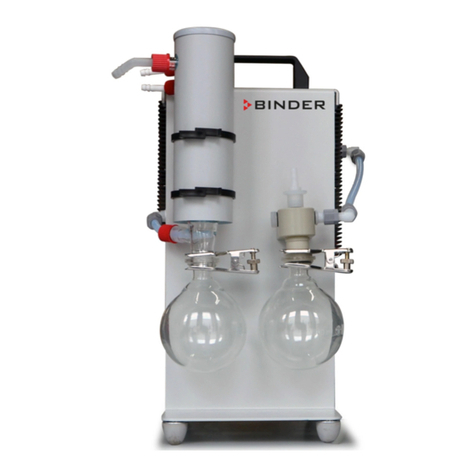
VAP 5 02/2022 Page 2/94
Contents
1. OPERATING MANUAL AND CLASSIFICATION .................................................. 5
1.1 Operating manual................................................................................................................................5
1.2 Legal considerations ...........................................................................................................................6
1.3 Structure of the safety and warning notices........................................................................................7
1.3.1 Warning levels ..........................................................................................................................7
1.3.2 Representation of safety and warning notices..........................................................................7
1.3.3 Safety alert symbol ...................................................................................................................7
1.3.4 Explosion protection symbol .....................................................................................................8
1.3.5 Pictograms in this manual.........................................................................................................8
1.4 Localization / position of safety labels on the device ..........................................................................9
1.5 Type plates and classifications .........................................................................................................10
1.5.1 Type plate of the entire device VAP 5 ....................................................................................10
1.5.2 Type plate of the electric motor ..............................................................................................12
1.5.3 Type plate of the mechanical pump unit .................................................................................12
1.5.4 Classification on the cable gland ............................................................................................12
1.6 Ex classification of the device and immediate surroundings ............................................................13
1.6.1 Classification of the assembly “VAP 5 vacuum pump” ...........................................................13
1.6.2 Parts of the assembly “VAP 5 vacuum pump”........................................................................14
2. SAFETY................................................................................................................ 15
2.1 Personnel Qualification .....................................................................................................................15
2.2 Intended use .....................................................................................................................................17
2.3 Foreseeable Misuse..........................................................................................................................20
2.4 Residual Risks ..................................................................................................................................21
2.5 Operating instructions .......................................................................................................................22
2.6 Safety regulations .............................................................................................................................22
2.6.1 General information ................................................................................................................22
2.6.2 Safety instructions on installation ...........................................................................................23
2.6.2.1 Measures against overheating ..................................................................................................23
2.6.2.2 No installation in potentially explosive areas of Zone 1 or 0 .....................................................23
2.6.2.3 Technical ventilation (extraction ................................................................................................24
2.6.2.4 Equipotential bonding according to the grounding concept ......................................................25
2.6.2.5 Accessibility to the disconnection from the power supply .........................................................25
2.6.3 Safety instructions on operating the vacuum pump................................................................26
2.6.3.1 Measures against hazards caused by voltage ..........................................................................26
2.6.3.2 Measures against hazards caused by hot surfaces ..................................................................26
2.6.3.3 Measures against hazards from cold surfaces..........................................................................27
2.6.3.4Observe the maximum gas suction temperature ......................................................................27
2.6.3.5 Measures against condensation by pumping vapors ................................................................28
2.6.3.6 Ventilation precautions ..............................................................................................................28
2.6.4 Safety instructions on inert gas supply ...................................................................................29
2.6.5 Safety instructions on the aspirated media.............................................................................29
2.7 Operator responsibility, documentation, and measures ...................................................................30
2.7.1 Risk assessment / explosion protection document.................................................................30
2.7.2 Employee training and protocols ............................................................................................31
2.7.3 Operating instructions issued by the operator ........................................................................31
2.7.4 Personal protective equipment ...............................................................................................32
2.7.5 Standard Operating Procedures (SOP) ..................................................................................32
2.7.6 Testing and maintenance .......................................................................................................32
2.7.7 Operation log ..........................................................................................................................32
3. DEVICE DESCRIPTION ....................................................................................... 33
3.1 Device overview ................................................................................................................................33
3.2 Description and equipment ...............................................................................................................35
3.3 Manufacturer's safety plan: Protective measures and equipment ....................................................36




























